-
 The Mystic massacre – also known as the Pequot massacre and the Battle of Mystic Fort – took place on May 26, 1637, during the Pequot War, when Connecticut colonists under Captain John Mason and their Narragansett and Mohegan allies set fire to the Pequot Fort near the Mystic River.
The Mystic massacre – also known as the Pequot massacre and the Battle of Mystic Fort – took place on May 26, 1637, during the Pequot War, when Connecticut colonists under Captain John Mason and their Narragansett and Mohegan allies set fire to the Pequot Fort near the Mystic River. -
 This Date in Native History: On April 8, 1756, “The 1756 Scalp Act was the result of close to 40 years of the Penn family lying to Delaware and Shawnees,” Pennsylvania Historian Norman Houser said. The act legalized the taking of scalps for money, paid by the Pennsylvania government. The Scalp Act was passed as a means to get rid of Delaware once and for all.
This Date in Native History: On April 8, 1756, “The 1756 Scalp Act was the result of close to 40 years of the Penn family lying to Delaware and Shawnees,” Pennsylvania Historian Norman Houser said. The act legalized the taking of scalps for money, paid by the Pennsylvania government. The Scalp Act was passed as a means to get rid of Delaware once and for all. -
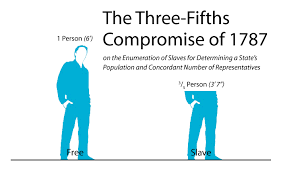 Three-fifths compromise, a compromise agreement between delegates from the Northern and the Southern states at the United States Constitutional Convention that three-fifths of the slave population would be counted for determining direct taxation and representation in the House of Representatives.
Three-fifths compromise, a compromise agreement between delegates from the Northern and the Southern states at the United States Constitutional Convention that three-fifths of the slave population would be counted for determining direct taxation and representation in the House of Representatives. -
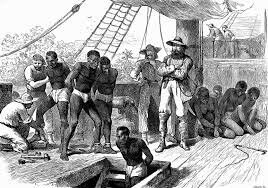 An act of Congress passed in 1800 made it illegal for Americans to engage in the slave trade between nations, and gave U.S. authorities the right to seize slave ships that were caught transporting slaves and confiscate their cargo. Then the "Act Prohibiting the Importation of Slaves" took effect in 1808.
An act of Congress passed in 1800 made it illegal for Americans to engage in the slave trade between nations, and gave U.S. authorities the right to seize slave ships that were caught transporting slaves and confiscate their cargo. Then the "Act Prohibiting the Importation of Slaves" took effect in 1808. -
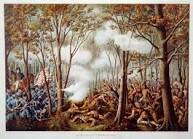 The Battle of Tippecanoe was fought on November 7, 1811, in Battle Ground, Indiana, between American forces led by then Governor William Henry Harrison of the Indiana Territory and Native American forces
The Battle of Tippecanoe was fought on November 7, 1811, in Battle Ground, Indiana, between American forces led by then Governor William Henry Harrison of the Indiana Territory and Native American forces -
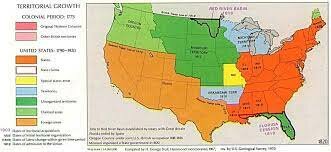 This legislation admitted Missouri as a slave state and Maine as a non-slave state at the same time, so as not to upset the balance between slave and free states in the nation. It also outlawed slavery above the 36º 30' latitude line in the remainder of the Louisiana Territory.
This legislation admitted Missouri as a slave state and Maine as a non-slave state at the same time, so as not to upset the balance between slave and free states in the nation. It also outlawed slavery above the 36º 30' latitude line in the remainder of the Louisiana Territory. -
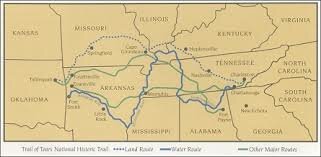 The Trail of Tears was a series of forced displacements of approximately 60,000 American Indians of the "Five Civilized Tribes" between 1830 and 1850 by the United States government. As part of the Indian removal, the ethnic cleansing was gradual, occurring over a period of nearly two decades.
The Trail of Tears was a series of forced displacements of approximately 60,000 American Indians of the "Five Civilized Tribes" between 1830 and 1850 by the United States government. As part of the Indian removal, the ethnic cleansing was gradual, occurring over a period of nearly two decades. -
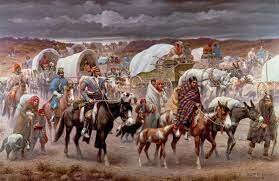 The Indian Removal Act was signed into law by President Andrew Jackson on May 28, 1830, authorizing the president to grant lands west of the Mississippi in exchange for Indian lands within existing state borders.
The Indian Removal Act was signed into law by President Andrew Jackson on May 28, 1830, authorizing the president to grant lands west of the Mississippi in exchange for Indian lands within existing state borders. -
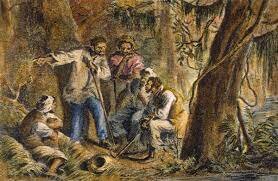 Nat Turner's Rebellion, also known as the Southampton Insurrection, was a rebellion of enslaved Virginians that took place in Southampton County, Virginia, in August 1831, led by Nat Turner. The rebels killed between 55 and 65 people, at least 51 of whom were White.
Nat Turner's Rebellion, also known as the Southampton Insurrection, was a rebellion of enslaved Virginians that took place in Southampton County, Virginia, in August 1831, led by Nat Turner. The rebels killed between 55 and 65 people, at least 51 of whom were White. -
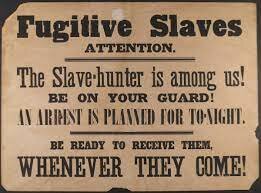 The Fugitive Slave Act or Fugitive Slave Law was passed by the United States Congress on September 18, 1850, as part of the Compromise of 1850 between Southern interests in slavery and Northern Free-Soilers.
The Fugitive Slave Act or Fugitive Slave Law was passed by the United States Congress on September 18, 1850, as part of the Compromise of 1850 between Southern interests in slavery and Northern Free-Soilers. -
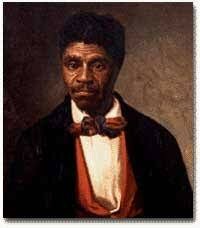 Dred Scott v. Sandford, 60 U.S. 393, was a landmark decision of the United States Supreme Court that held that the United States Constitution was not meant to include American citizenship for people
Dred Scott v. Sandford, 60 U.S. 393, was a landmark decision of the United States Supreme Court that held that the United States Constitution was not meant to include American citizenship for people -
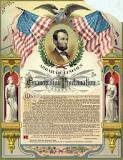 President Abraham Lincoln issued the Emancipation Proclamation on January 1, 1863, as the nation approached its third year of bloody civil war. The proclamation declared "that all persons held as slaves" within the rebellious states "are, and henceforward shall be free."
President Abraham Lincoln issued the Emancipation Proclamation on January 1, 1863, as the nation approached its third year of bloody civil war. The proclamation declared "that all persons held as slaves" within the rebellious states "are, and henceforward shall be free." -
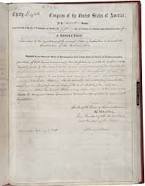 Neither slavery nor involuntary servitude, except as a punishment for a crime whereof the party shall have been duly convicted, shall exist within the United States, or any place subject to their jurisdiction.
Neither slavery nor involuntary servitude, except as a punishment for a crime whereof the party shall have been duly convicted, shall exist within the United States, or any place subject to their jurisdiction. -
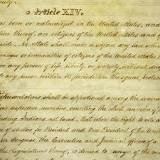 No State shall make or enforce any law which shall abridge the privileges or immunities of citizens of the United States; nor shall any State deprive any person of life, liberty, or property, without due process of law; nor deny to any person within its jurisdiction the equal protection of the laws.
No State shall make or enforce any law which shall abridge the privileges or immunities of citizens of the United States; nor shall any State deprive any person of life, liberty, or property, without due process of law; nor deny to any person within its jurisdiction the equal protection of the laws. -
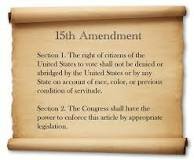 The Fifteenth Amendment to the United States Constitution prohibits the federal government and each state from denying or abridging a citizen's right to vote "on account of race, color, or previous condition of servitude." It was ratified on February 3, 1870, as the third and last of the Reconstruction Amendments
The Fifteenth Amendment to the United States Constitution prohibits the federal government and each state from denying or abridging a citizen's right to vote "on account of race, color, or previous condition of servitude." It was ratified on February 3, 1870, as the third and last of the Reconstruction Amendments -
 The Battle of the Little Bighorn, known to the Lakota and other Plains Indians as the Battle of the Greasy Grass, and also commonly referred to as Custer's Last Stand
The Battle of the Little Bighorn, known to the Lakota and other Plains Indians as the Battle of the Greasy Grass, and also commonly referred to as Custer's Last Stand -
 The Wounded Knee Massacre, also known as the Battle of Wounded Knee, was a massacre of nearly three hundred Lakota people by soldiers of the United States Army.
The Wounded Knee Massacre, also known as the Battle of Wounded Knee, was a massacre of nearly three hundred Lakota people by soldiers of the United States Army. -
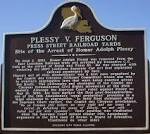 Plessy v. Ferguson, 163 U.S. 537, was a landmark U.S. Supreme Court decision in which the Court ruled that racial segregation laws did not violate the U.S. Constitution as long as the facilities for each race were equal in quality, a doctrine that came to be known as "separate but equal
Plessy v. Ferguson, 163 U.S. 537, was a landmark U.S. Supreme Court decision in which the Court ruled that racial segregation laws did not violate the U.S. Constitution as long as the facilities for each race were equal in quality, a doctrine that came to be known as "separate but equal